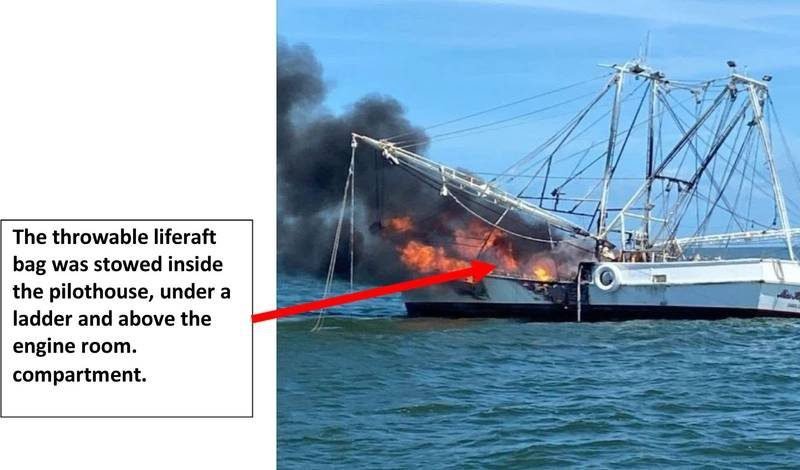Two recent marine accidents involving commercial fishing vessels (CFVs) highlighted the dangerous stowage conditions that compromised the effectiveness of life-saving equipment on board. In the first incident, a 41-foot CFV capsized and sank rapidly, with crew members unable to access personal flotation devices (PFDs) due to their inconvenient storage location. The liferaft and hydrostatic release unit were also improperly attached, hindering automatic deployment during the capsizing. A crew member had to manually release the life raft from a floating canopy.
In the second incident, a 60-foot CFV caught fire, forcing the crew to evacuate quickly. However, the life jackets were stored in the galley on benches instead of easy-to-access workstations like the bridge or aft deck. The ejectable liferaft was similarly difficult to reach, stored under an internal ladder in the wheelhouse, directly above the engine room where the fire originated. The intensity of the fire prevented the crew from retrieving the life raft before abandoning the ship.
To address these safety concerns, the Coast Guard advises CFV operators to ensure that liferafts are securely attached to obstruction-free structures for automatic deployment. Manual liferafts should be stored according to USCG requirements for easy access, and life jackets should be kept in easily accessible locations where they can float freely in emergencies. These recommendations aim to prevent similar accidents and improve the overall safety of CFVs. (Source: U.S. Coast Guard Marine Safety Alert, January 2, 2025)


















